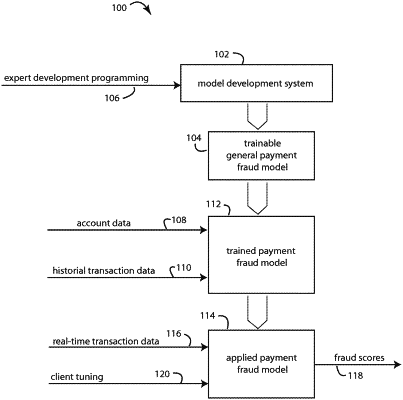| CPC G06Q 20/4016 (2013.01) [G06Q 10/0635 (2013.01); G06Q 40/03 (2023.01)] | 20 Claims |

|
1. A computer-implemented method for detecting payment fraud, comprising:
executing, at a computing device, a computer program including a classification model and a plurality of smart agents respectively corresponding to a plurality of transactional entities, each smart agent having a profile comprising a representation of historical data of the corresponding transactional entity and including long-term and real-time profiles with the real-time profile excluding historical data aged beyond a pre-determined time period, and the classification model being constructed according to one or more of: data mining logic, a neural network, case-based-reasoning, clustering, fuzzy logic, a genetic algorithm, a decision tree, and business rules;
inputting, via the computing device, transactional data to the program, the transactional data including transaction records reflecting transactions of the plurality of transactional entities, the program being configured to perform the following steps for each of the transaction records—
compare the contents of at least one data field of the transaction record against the corresponding long-term profile and real-time profile to generate a first output based on a comparison result, the first output including an exception if the comparison result exceeds a corresponding threshold,
process the contents of at least one data field of the transaction record via the classification model to generate a second output,
analyze the first output and the second output to generate a fraud score, including by adjusting the fraud score based on any generated exceptions,
wherein the program is further configured to—
receive feedback relating to accuracy of the fraud score,
re-train the classification model based on the feedback,
update the long-term and real-time profiles based on the feedback,
process future transaction records using the re-trained classification model and the updated long-term and real-time profiles.
|